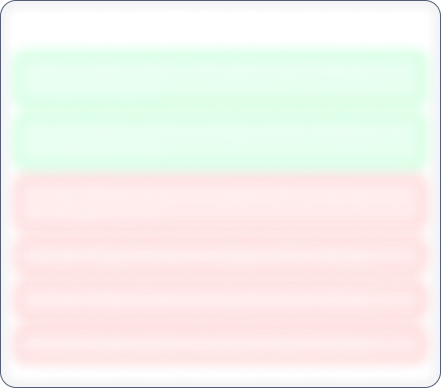Get 50% OFF This Monsoon!
Sea TV Network

No Data Available
Investor Sentiment
Sea TV Network Share price and Fundamental Analysis
Key Metrics
Stock Returns
Stock Heatmap

No Stocks
Smart Score

Unlock Smart Score
See Detailed Analysis & Insights


Unlock Insights
See Detailed Analysis & Insights
Technicals
Returns Calculator
If you would have investedResearch Report
No Research Report
Corporate Action
Financials
Key Ratios
ROE
Avg ROE (3 Yrs) : NaN%
ROCE
Avg ROCE (3 Yrs) : NaN%
ROA
Avg ROA (3 Yrs) : NaN%
NPM
Avg NPM (3 Yrs) : NaN%
Dividend History
5 Year FactSheet
Documents

No Data Available
News
Sea TV Network Management and History
Company Management


Unlock Management Data
See Detailed Analysis & Insights
Company History
Sea TV Network Ltd is a well known name in the field of Electronic Media in the Heritage city of Agra. The company is an ISO 9001:2000 public limited company engaged in providing services of a Multi System Operator (MSO) to various local cable operators of Agra and adjoining areas.
The company has their local channels and programs, which primarily focus on Agra city/ UP State news/ events and information. Their channels include Sea TV, Sea News, Sea Bhakti, Sea Jinvani, Sea Cinema, Sea Music, Sea Theatre, and Sea Beats.
SEA TV Network Ltd was incorporated on May 21, 2004 at Agra in Uttar Pradesh. The company is one of the three MSOs in the Agra region. The promoters of the company are in this line of activity since about 16 years and are well conversant with the Cable TV industry.
The promoters of the company, the Jain brothers started their cable TV business in the year 1992 in the name of 'Shubham Cable Satellite'. They made a tie up with various organized market participants and started taking signals from them at both locations. It may be noted here that upto this time the status of the Jain brothers was that of an LCO (Local Cable Operator).
In January 2003, the Jain brothers started business operations under SPN Trust, an existing family trust, for having smoother operations and better control over their business, under the name and style of 'Sea TV'. Since the first day of commencement of business operations under SPN Trust, they acquired the status of a full fledged MSO (Multi System Operator).
In May 21, 2004, the company was incorporated to carry on the business in a more organized and streamlined manner as a corporate entity. The company purchased the entire business of the SPN trust along with the assets and cable network.
In the year 2009, the Ministry of Information and Broadcasting, Government of India gave their permission for up-linking and down-linking of non-news and current affairs TV channel 'Jinvani' in Hindi, English and all other Indian languages and for news and current affairs TV channel 'Sea News' in Hindi, English and all other Indian languages.
In August 12, 2010, the company has made 3 applications to the Ministry of Information & Broadcasting for uplinking TV channels with news and current affairs in the name of 'Real News', 'Ocean TV' and 'Your TV'.
The company plans to set-up complete infrastructure/facilities for providing TV Channels through Digital Transmission through Conditional Access System (CAS) using IPTV format in whole of Agra City and adjoining areas. CAS is a system through which one can control the delivery of channels to only those subscribers who demand and pay for such channels.
The company proposes to install Optical Fibre Network with Optical Cable having 48 lines and they reserve 33 lines for own use against the immediate requirement of 15 lines. They propose to give remaining 15 lines network on rent to third parties which would translate into an additional source of income for the company.
Sea TV Network Share Price
Sea TV Network share price reflects investor sentiment toward the company and is impacted by various factors such as financial performance, market trends, and economic conditions. Share price is an indicator which shows the current value of the company's shares at which buyers or sellers can transact.
Sea TV Network Market Cap
Market capitalization of Sea TV Network indicates the total value of its outstanding shares. Marketcap is calculated by multiplying share price and outstanding shares of the company. It is a helpful metric for assessing the company's size and market Valuation. It also helps investors understand how Sea TV Network is valued compared to its competitors.
Sea TV Network PE Ratio
Sea TV Network PE ratio helps investors understand what is the market value of each stock compared to Sea TV Network 's earnings. A PE ratio higher than the average industry PE could indicate an overvaluation of the stock, whereas a lower PE compared to the average industry PE could indicate an undervaluation.
Sea TV Network PEG Ratio
The PEG ratio of Sea TV Network evaluates its PE ratio in relation to its growth rate. A PEG ratio of 1 indicates a fair value, a PEG ratio of less than 1 indicates undervaluation, and a PEG ratio of more than 1 indicates overvaluation.
Sea TV Network ROE (Return on Equity)
Return on Equity (ROE) measures how effectively Sea TV Network generates profit from shareholders' equity. A higher ROE of more than 20% indicates better financial performance in terms of profitability.
Sea TV Network ROCE (Return on Capital Employed)
Return on Capital Employed (ROCE) evaluates the profitability of Sea TV Network in relation to its capital employed. In simple terms, ROCE provides insight to investors as to how well the company is utilizing the capital deployed. A high ROCE of more than 20% shows that the business is making profitable use of its capital.
Sea TV Network Total Debt
Total debt of Sea TV Network shows how much the company owes to either banks or individual creditors. In simple terms, this is the amount the company has to repay. Total debt can be a very useful metric to show the financial health of the company. Total debt more than equity is considered to be a bad sign.
Sea TV Network Debt to Equity Ratio
The Debt-to-Equity (DE) ratio of Sea TV Network compares its total debt to shareholders' equity. A higher Debt to Equity ratio could indicate higher financial risk, while a lower ratio suggests that the company is managing its debt efficiently.
Sea TV Network CAGR (Compound Annual Growth Rate)
CAGR shows the consistent growth rate of Sea TV Network over a specific period, whether it is over a month, a year, or 10 years. It is a key metric to evaluate the company’s long-term growth potential. Main metrics for which CAGR is calculated are net sales, net profit, operating profit, and stock returns.
Sea TV Network Technical Analysis
Technical analysis of Sea TV Network helps investors get an insight into when they can enter or exit the stock. Key components of Sea TV Network Technical Analysis include:
Support Levels (S1, S2, S3)
There are usually multiple support levels, but the main support levels for a stock are S1, S2, S3. Support levels indicate price points where stock might get support from buyers, helping the stock stop falling and rise.
Resistance Levels (R1, R2, R3)
There are usually multiple resistance levels, but the main resistance levels for a stock are R1, R2, R3. Resistance levels represent price points where Sea TV Network shares often struggle to rise above due to selling pressure.
Sea TV Network Dividends
Dividends refer to the portion of the company’s profits distributed to its shareholders. Dividends are typically paid out in cash and reflect Sea TV Network ’s financial health and profitability.
Sea TV Network Bonus Shares
Bonus shares are usually given by companies to make the stock more affordable, increase liquidity, boost investor confidence, and more.
Sea TV Network Stock Split
Stock split increases the number of its outstanding shares by dividing each existing share into multiple shares. When the company offers a stock split, the face value of the stock reduces in the same proportion as the split ratio.
Sea TV Network Financials
The financials of Sea TV Network provide a complete view to investors about its net sales, net profit, operating profits, expenses, and overall financial health. Investors can analyze financial data to assess the company’s stability and also understand how the company has been growing financially.
Sea TV Network Profit and Loss Statements
The profit and loss statement of Sea TV Network highlights its net sales, net profit, total expenditure, and operating profits in the current financial year. This Profit and Loss statement is crucial for evaluating the profitability and financial stability of Sea TV Network .
Sea TV Network Balance Sheet
The balance sheet presents a snapshot of Sea TV Network ’s assets, liabilities, and equity of shareholders, providing insights into the financials of the company.
Sea TV Network Cashflow Statements
Cashflow statements track the company's cash inflows and outflows over a period. It is an essential tool for understanding how well the company manages its liquidity and finances.


